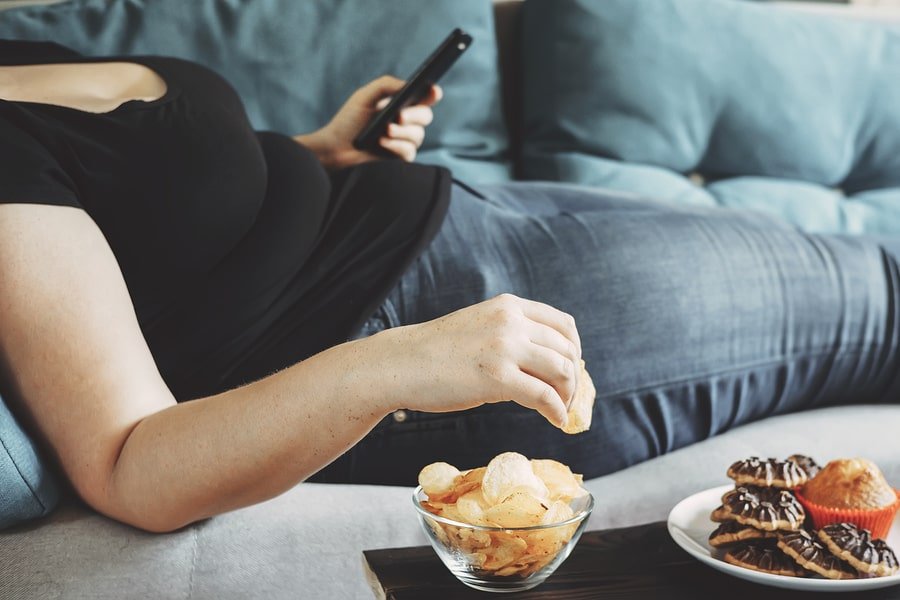For all of us our lives’ have been greatly affected by Covid-19 and the huge impact this has had on our lifestyle. With ‘stay at home’ restrictions and recommendations, many have had to begin or return to working from home, which has resulted in a substantial decrease in activity. Current evidence suggests an approximate 30% increase in sitting time and a 30% reduction in physical activity.
We all know the risk factors for serious illness from Covid-19; cardiovascular disease, diabetes, obesity and high blood pressure. There appearsto be a positive linear association between increasing BMI and admissions to hospital due to COVID-19. These in turn are further compounded and linked to reduced physical activity.
The associated drop-in activity isn’t a positive shift!

Physical inactivity itself has been linked to 3,000,000 deaths per year which is a staggering figure and evidence strongly links a physically sedentary lifestyle to a significantly increased risk for chronic disease.
In the clinic we have seen many clients presenting with problems related to a substantial reduction in physical activity, with soreness and stiffness due quite simply to a lack of movement.
Cumulative movement daily has plummeted.
This may seem like an insurmountable task when motivation is at an all-time low, so below are some simple tips on how to integrate more movement throughout your day:
-
Set reminders to move hourly. A gentle nudge to get up from your chair, move and have a stretch.
-
Follow the 20/20/20 rule. This involves taking a break of at least 20 seconds, every 20 minutes and to look at least 20 feet away.
-
Ensure you are hydrated. The fact of getting up to get water also means that you need to have frequent breaks (and subsequently move more).
-
Taking regular calls throughout the day that are not video based: can you take them standing? Or when appropriate, even get outside and walk while taking them.
-
Don’t snooze your alarm and roll out of bed just in time for work. Try to get up a bit earlier and get out on a pre-work walk to set you up for the day — see it as an equivalent to your ‘commute’.
-
Team up with a friend for scheduled exercise outdoors.
-
Track your movement, steps or minutes stood per day via a fitness watch.
-
Get moving at home by following the simple exercises in the video below.
“Furthermore, in clinic we have seen a rising number of clients suffering with Long COVID.
— Chiswick Physio

So, what is long COVID?
Post COVID-19 syndrome is commonly known as long COVID. It describes signs and symptoms that occur after developing COVID-19. Some of the reported symptoms include fatigue, breathlessness, chills/sweats, muscle weakness and headaches (just to name a few).
Struggling to get back into exercise with long COVID?
Below are the suggested phases of exercise prescription when returning to exercises after suffering with long COVID symptoms.
Phase 1- Preparation from return to exercise. Type of exercise: Gentle walking, breathing exercises, mobility exercises
Phase 2 – Low intensity Exercises. Type of exercise: increased intensity of walking, yoga/Pilates, lower-level resistance exercise (full body)
Phase 3 – Moderate intensity aerobic & strength exercises. Type of exercise: cycling, running, intense walking, strength and conditioning training, return to sports
Phase 4 – Return to your pre-COVID regular exercise/activity regime
Exercise and physical fatigue
Fatigue is one of the most common debilitating symptoms experienced during long COVID. Exercise and fatigue need to be managed carefully and phased back in gradually. It is not advised to jump straight back into your exercise intensity pre-Covid.
Some useful tips to consider when returning to exercise consist of – monitoring your heart rate when you return to exercise, monitor your rate of perceived exertion (from a scale of 0-10), keep your heart rate around 60% of maximal heart rate for the first few weeks back.
If you require some assistance with getting back to exercise post COVID please contact Chiswick-Physio and ask to speak to Jack our strength and conditioning coach. Alternatively you can BOOK ONLINE now, email Jack on jack@chiswick-physio.co.uk or call 07900603617 to speak to one of the team.





